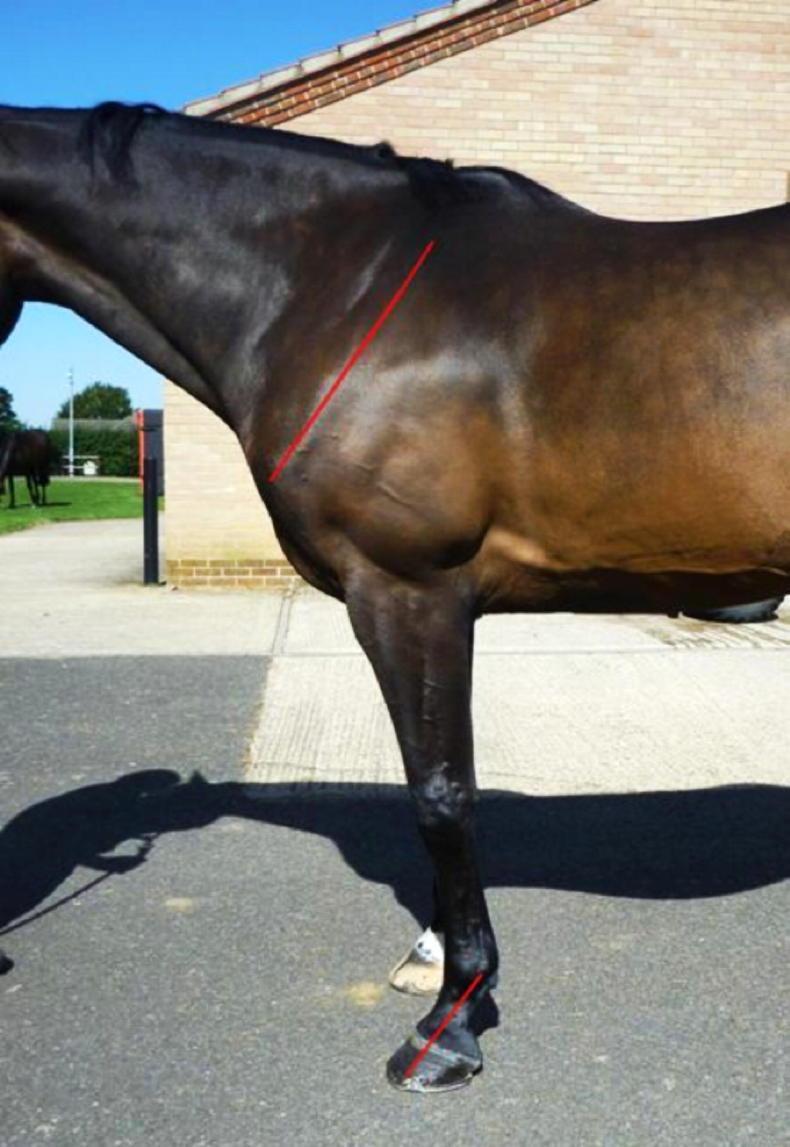THE horse’s foot is the interface between the horse and the ground, it is a complex system which surrounds, supports and protects the lower limb of the horse.
It has three main mechanical roles: shock absorption when the foot lands on the ground surface, support and grip when the limb is bearing weight, and propulsion when it leaves the ground.
The horn-based hoof capsule encases three bones, multiple ligaments and tendons, two synovial structures, a digital cushion, cartilages of the foot, blood vessels and nerves.
Given all this, hoof conformation and balance have a huge role to play in preventing injury. In a study undertaken by Dr Sue Dyson of 506 sport horses 47% were overtly lame and this figure reflects what we as vets see daily. Often horses have a team of professionals working to prevent and treat musculoskeletal issues, yet these professionals often see perpetuating cycles.
Links
Research has demonstrated links between conformation and other pathologies such as sacro-iliac pain, gluteal pain, stifle and hock issues etc. Vets, physios and chiropractors are often battling with limb and upper body musculoskeletal issues caused by poor hoof conformation and balance. Yet often farriers are battling with forces from above affecting the hoof shape and conformation. Therefore, it is vital that the team works together in a whole horse approach to get a solution for each individual horse.
In recent years our understanding of hoof balance and injuries has greatly improved. With increasing veterinary and farrier research improving our knowledge in the field.
When a horse propels itself to move a ground reaction force pushes back. The hoof is a deformable structure in between the ground and the weight of the animal, therefore balance issues in the foot leads to less optimal limb and body function and repetitive stresses to the tissues which may ultimately lead to injury.
In recent years myofascial tissue research has evolved. The myofascial tissues cover the entire musculoskeletal system connecting every muscle, tendon, etc., in the body, therefore any hoof imbalance can have wide reacting effects to the whole locomotor system.
Relationship
There is an intricate relationship between the forces exerted on feet and the whole body, therefore highlighting the need for the farrier to appreciate the affect they have on the limbs and upper body, and vice versa the veterinary surgeons, physios and chiropractors understanding how limb and upper body pathologies affect the hoof.
We must view the horse as a single entity, treating the whole horse and not the symptom. \ Esther Skelly-Smith MRCVS


 This is a subscriber-only article
This is a subscriber-only article
 It looks like you're browsing in private mode
It looks like you're browsing in private mode





SHARING OPTIONS: